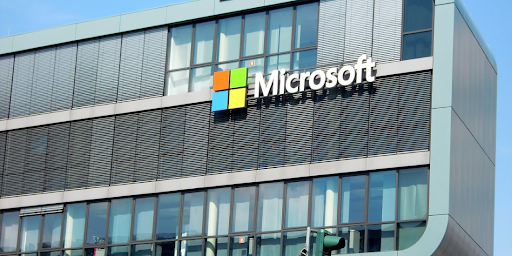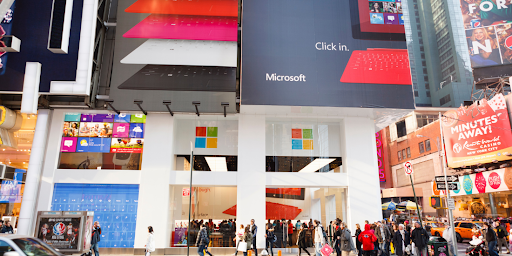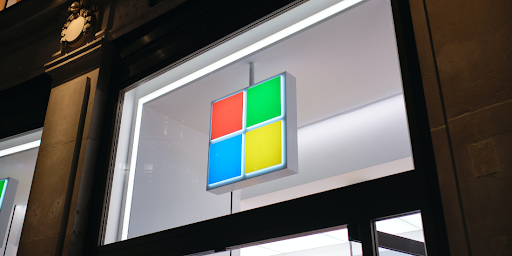A Comprehensive Guide to Microsoft Ads: Everything You Need to Know
So you’re a marketer or small business owner who wants to start advertising on Microsoft Ads—congratulations! You’re about to join the ranks of over one hundred thousand other advertisers who are already using Microsoft Ads to reach out to potential customers.
Microsoft isn’t just a search engine and the creator of your Windows operating system—it’s also a powerful advertising ecosystem that can help you reach your target market and achieve your business goals.
This underdog of a search engine has some serious advantages when it comes to advertising, including lower costs per click, less competition, and access to a vast potential customer base. But you’ll see all of that for yourself soon enough.

To help you better understand Microsoft Ads and how to make the most of it, we’ve put together this comprehensive guide. In it, we’ll cover everything from the basics of Microsoft Ads to more complex topics like creating effective campaigns, choosing the right keywords, and more.
By the end of this guide, you’ll be an expert on Microsoft Ads and ready to create your first campaign.
Excited? You better be. You’re about to be introduced to a new world of advertising possibilities. So without further ado, let’s do this!
The Complete Microsoft Ads Guide for Advertisers
What Are Microsoft Ads?
Microsoft Ads (formerly Bing Ads) is a pay-per-click (PPC) advertising platform that allows businesses and individuals to advertise on Microsoft properties, including Bing ads, Yahoo, AOL, and MSN. Advertisers can create text, image, or video ads that appear in search results when users enter specific keywords or terms.
You can use Microsoft Ads to achieve a variety of business goals, such as generating leads, driving traffic to your website, or increasing brand awareness.
In addition, Microsoft Ads is an effective way to reach out to potential customers who are already interested in what you have to offer—and it’s a great complement to other marketing channels, such as organic search or social media.
Microsoft Advertising Statistics

The Market Share
Microsoft Ads may not be the first thing that comes to mind when you think of online advertising, but it actually has a pretty significant market share.
In fact, Microsoft Ads is the second-largest search engine in the world, with between 2.83% and 12.31% market share (second only to Google, which has a whopping 88.28% market share) but ahead of Yahoo (with a mere 1% market share).
The Target Audience
Microsoft’s target audience is slightly different than Google’s—so even if you’re already advertising on Google, there’s a good chance that Microsoft Ads can reach a new group of potential customers.
According to Start Up Talky, “Microsoft’s target audience age group range from 16 and older and from both urban and rural areas around the world. They also target young crowds that are usually students, employees, and professionals and are loyal to the brand.”
This tells us that Microsoft Ads is an effective way to reach out to a slightly different audience than what you’re used to on Google. Google tends to focus on a more established audience while Microsoft Ads reaches out to a younger, hipper crowd—which could be perfect for your business, depending on what you’re selling.
The Reach
Microsoft Ads also has a pretty significant reach: over 724 million monthly unique searchers use Microsoft products each month. Furthermore, 296 million of those individual users utilize Microsoft advertising products and reap the rewards along the way.
Moreover, Microsoft advertising has recently expanded to over 29 new countries. This means that Microsoft Ads is now available in a total of 190 countries and territories—which is pretty much the entire world. So if you’re looking to reach a global audience, Microsoft Ads is definitely the way to go.
Microsoft isn’t just a search engine and the creator of your Windows operating system—it’s also a powerful advertising ecosystem that can help you reach your target market and achieve your business goals.
The Effectiveness
Now that we know a little bit more about Microsoft Ads, let’s talk about how effective it actually is. After all, what good is an advertising platform if it doesn’t actually get results?
Well, depending on your budget, Microsoft Ads can be quite effective. In fact, if you’re on a tight budget, you’ll be happy to know that Microsoft Ads boasts a cheaper cost-per-click (CPC). It’s difficult to say exactly how much by, but some sites claim it to be around 32.5% to 60.2% less than Google Ads.
But that’s not all—Bing Ads also saw a 45% higher click-through rate (CTR) than Google in 2021, which means that your ads are more likely to be seen and clicked on by users. This may be down to less competition on Microsoft Ads, as it’s not as popular as Google Ads—so your ads are more likely to stand out.
Why are we sharing all of this with you? Because we want you to know that Microsoft Ads is a viable option for your business—and one that could be more effective (and more affordable) than you think.
Microsoft Ads vs. Google Ads

The war of all wars. The two giants of the online advertising world. Microsoft Ads vs. Google Ads is a topic that has been debated time and time again, with Google coming out on top every single time. But is that really the case? Let’s take a closer look.
Why Consider Advertising On Bing Ads?
Google Ads is indeed more popular than Microsoft Ads—much more popular. However, that doesn’t necessarily mean it’s better for everyone. As we mentioned earlier, Microsoft Ads can be cheaper and more effective than Google Ads.
Bing Ads is the underdog in the world of PPC advertising, and that’s precisely why you should consider it for your business. By advertising on Microsoft Ads, you’re getting in on the ground floor of an extremely promising platform. Of course, it’s not the first choice, but that doesn’t mean it can’t be the best choice for you.
Hesitant about making the switch from Google Ads? We understand. Google has been the go-to choice for online advertising for years, and it’s not easy to make a change. But sometimes, the best thing you can do for your business is to take a leap of faith—and Microsoft Ads just might be worth that leap.
We discuss more insights into Bing Ads in our previous article, “Are Bing Ads Worth It: Insights Into Microsoft Ads Platform.” And yes, as it turns out, Alex’s grandma is still being ad targeted for knitting patterns. (It’s only funny if you click the link!)
The Benefits of Microsoft Ads
Microsoft Ads offers a few benefits that Google Ads doesn’t—and vice versa. Here’s a quick overview of some of the key benefits of Microsoft Ads:
- Cheaper cost-per-click (CPC)
- Higher click-through rate (CTR)
- Recently expanded to over 29 new countries
- Less competition, more room for growth
- Great device targeting
- Higher engagement
- Greater transparency
- Increased granular control
- It offers a few features that Google Ads doesn’t
- If you can’t beat ’em, join’ em’ Bing also allows you to import your Google Ads campaigns directly into Microsoft Ads—so you can get started quickly and easily.
And here are some of the benefits of Google Ads:
- Much more popular
- More features and options
- Better integrations
- Greater flexibility
- Capabilities that allow for a range of targeting
- Maintain full control
- Use any budget
- Fast results
- Incredibly user-friendly
- High conversions
It’s clear that Google Ads is the king of PPC advertising and PPC campaigns. But all of the above is susceptible to just how well you know Google Ads. If you’re not an expert, your campaigns will likely suffer—and so will your conversions.
At the end of the day, it really depends on what you’re looking for in an advertising platform. If you want something cheaper, with less competition, and more room to grow—Microsoft Ads is a great choice. But if you’re looking for more features and options, then Google Ads is the way to go.
Who Should Use Microsoft Ads?
According to A6 Agency, Microsoft Advertising users mainly are:
- Married (51%)
- Between the age of 35 to 54 (40%)
- Earn an income above $100,000 (25%)
The statistics above show us that if you are targeting married people, or people in the middle-age bracket, Microsoft Advertising should be one of your main priorities. Also, since a quarter of users earn more than $100,000 annually, we can infer that these individuals have purchasing power and are more likely to convert.
That being said, however, anyone can use and benefit from Microsoft Ads. If you’re looking for an advertising platform that’s cheaper than Google Ads and offers a variety of features, Microsoft Ads is a great choice—regardless of your target audience.
If you’re thinking about using Microsoft Ads, we recommend that you:
- Research the platform thoroughly
- Understand the different features and options
- Consider your advertising goals
- Determine your budget
- Experiment with different campaigns
How do Microsoft Ads Work?

Microsoft PPC Campaigns: The Cost
Similar to Google Ads, Microsoft Advertisements is a Pay-Per-Click (PPC) platform, which means that you are only charged when someone clicks on your ad. You can set a daily budget for your campaign, and you will never be charged more than that amount.
Microsoft Ads are free to sign up for, and you can set your own budget. The average CPC on Microsoft Ads is between $0.60 and $0.80, but this can vary depending on your industry and the keywords you are bidding on.
Microsoft PPC Campaigns: The Keywords
Keywords are an essential part of any PPC campaign. They help to determine when and where your ad will be shown. When choosing keywords for your Microsoft Ads campaign, you’ll want to consider three main factors:
- Relevance: How closely related are your keywords to your product or service?
- Bid: How much are you willing to pay per click?
- Quality Score: How relevant and valuable is your ad?
For those who aren’t sure what keywords are, they are basically the words or phrases that people use when they search for something on the internet. Therefore, in order for your ad to be shown, it must be relevant to the keywords that someone is searching for. For instance, if you sell shoes, your ad might be displayed when someone searches for “shoes near me” or “buy shoes.”
Choosing the right keywords is essential to the success of your campaign. If you select keywords that are too general, your ad will be shown to people who aren’t interested in what you’re selling. The best way to find the right balance is to experiment with different keywords and see what works best for your business.
Microsoft PPC Campaigns: The Ad Placement
Now that you know how Microsoft Ads works and what keywords are, it’s time to discuss where your ads will appear.
Your ads will generally be shown on the Microsoft Search Network, including Bing, AOL, Yahoo, and other search engines. This can be on top of the search results, on the side of the page, or at the bottom of the page. The ideal placement for your ad is usually towards the top of the page since consumers are more likely to notice it there.
What Tools Do Microsoft Ads Offer?
Microsoft Ads offers a variety of features and tools that can help you create successful campaigns. Here are some of the most popular features:
- Ad Preview – This shows you a sneak peek of your ad’s appearance before it goes live.
- Keyword Planner – This tool helps you to research and choose the right keywords for your campaign.
- Editor – A desktop application that allows you to manage your campaigns.
- Automated Bidding – This feature allows you to set a bid amount and let Microsoft Ads automatically adjust it based on your goals.
- Competition Tab – Shows you how your ads are performing compared to your competitors, and provides you with actionable competitive recommendations.
- Conversion Tracking – Allows you to track how many people are taking action on your ad, such as clicking through to your website or making a purchase. Works both offline and online.
You can find a complete list of Microsoft tools here!
Types of Microsoft Ads Campaigns
Microsoft Ads offers eight different types of campaigns:
- Expanded Text Ads
- Responsive Search Ads
- Product Ads
- Multimedia Ads
- Microsoft Audience Ads
- Microsoft Advertising in Bing Smart Search
- Dynamic Search Ads
- App Install Ads
Each type of campaign has its own set of features and benefits, so it’s essential to choose the right campaign type for your business goals.
You can find out more about each campaign type here.
How to Set Up Your First Campaign With Microsoft Ads
Now that you know all about Microsoft Ads, it’s time to create your first campaign! The process is actually pretty simple:
Step #1 Create an Account or Sign In!
First, head to this link and sign in to your Microsoft Advertising account. If you don’t have an account yet, click sign up at the bottom of the box and create one.
When you’re in, follow the on-screen instructions to finish creating your account. You’ll need to provide some basic information about your business, such as your business name, website, and time zone.
Step #2 Selecting the Right Keywords
You must pick your target keywords before you create a Microsoft Ads campaign. As we mentioned earlier, these are the words or phrases that you want your ad to show up for when people search.
There are a few different ways to find the right keywords for your business. The first is to use Microsoft’s Keyword Planner tool. This tool allows you to research keywords and see how much competition there is for each one.
Microsoft will suggest a list of keywords based on your business information, but you can also use it to research specific terms that you want to target.
Step #3 Create Your Ad
Once you’re all set up and have found your keywords, you can create your first Bing Ad!
To begin, go to your “Campaigns” page and then select the “Create Campaign” button in the center of your screen.
Then, establish your PPC advertising goals. For example, one of your goals could be gaining more website visitors, while another could be generating more sales. Microsoft’s trusty setup wizard will be there to guide you through the process and help you choose the correct settings for your campaign.
After choosing your settings, it’s time to create your ad! The ad creation process is pretty straightforward–just fill in the blanks with your business information, such as your website URL, company name, and tagline. Then, write your ad copy and choose which keywords you want your ad to show up for.
Hint: Not sure what to write in your ad? Take a look at your competitors’ ads and see what they’re doing. Then, try to create an ad that’s better than theirs! Or, if you have the budget, ask a professional!
Finally, hit “Save,” and your Bing Ad will go live!
Tips for Succeeding With Microsoft Ads
That all sounds easy enough, right? Now that you know the basics of Microsoft Ads, it’s time to get started with your first campaign! But to ensure you’re as successful as possible, we thought we’d leave you with a few extra tips:
- Make sure your ads are relevant to your keywords – If they’re not, you could end up wasting money on clicks that don’t convert.
- Keep your ad copy short and sweet – People have short attention spans, so try to get your point across in as few words as possible.
- Advertise on Microsoft Ads year-round – Just because the holidays are over doesn’t mean people stop searching for your products or services! Keep your Bing Ads running all year long to ensure you’re consistently generating leads and sales.
- Bid on competitor keywords – If you’re unsure which keywords to target, start by bidding on your competitors’ keywords. Chances are if they’re running ads, those keywords are converting well for them.
- Use negative keywords – Negative keywords allow you to exclude certain words or phrases from your ad campaigns. This ensures that your ads only show up when people search for terms relevant to your business.
- Test, test, test – Always be testing! Try different ad copy, images, and even landing pages to see what works best for your business. Bing Ads makes it easy to A/B test various elements of your campaigns, so take advantage of that feature.
Final Thoughts
Microsoft advertising may not be as extensive as Google Ads, but it’s still a powerful tool that can help you reach your target audience. And now that you know the basics of how to set up and run a campaign, there’s no reason why you shouldn’t give it a try!
We won’t lie and say that Microsoft Ads is for every single business out there because it isn’t. However, if you’re in a competitive industry and you’re looking for another avenue to reach your customers, Microsoft Ads is definitely worth considering.
Plus, there’s absolutely nothing stopping you from running ads on both Microsoft Ads and Google Ads. In fact, we recommend it! By advertising on both platforms, you’ll reach an even wider audience, and you’ll be able to compare your results to see which platform performs better for your business.
So get to it, and keep these tips in mind to ensure your Microsoft Ads campaigns are as successful as possible! And if you need any help along the way, don’t hesitate to reach out to us at Adcore. We’ll be more than happy to help you navigate the world of Microsoft advertising.
PPC Marketing Expert?
Get things done with Adcore Marketing Cloud.
5 essential PPC tools under one roof.
Related Articles